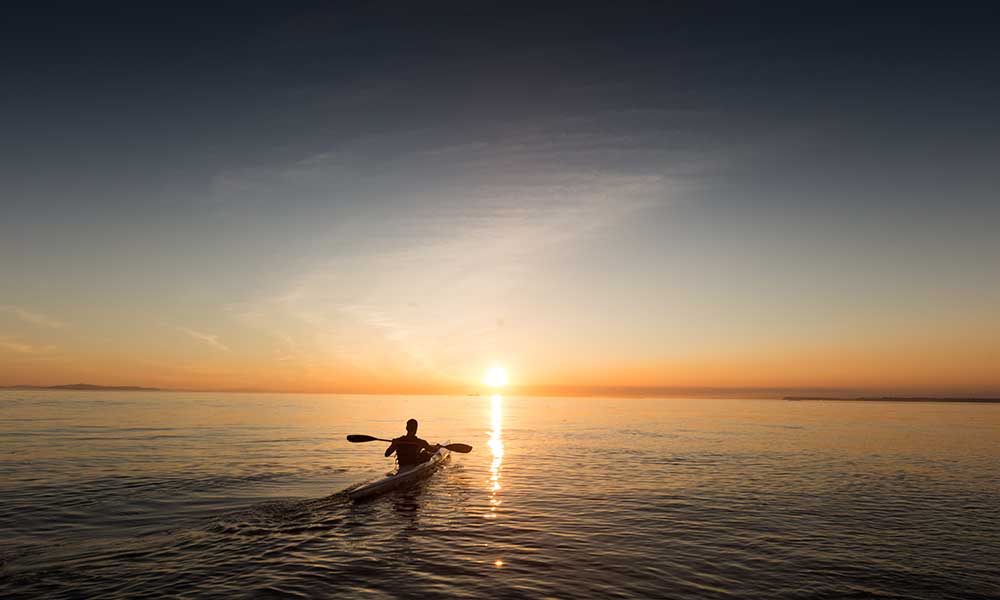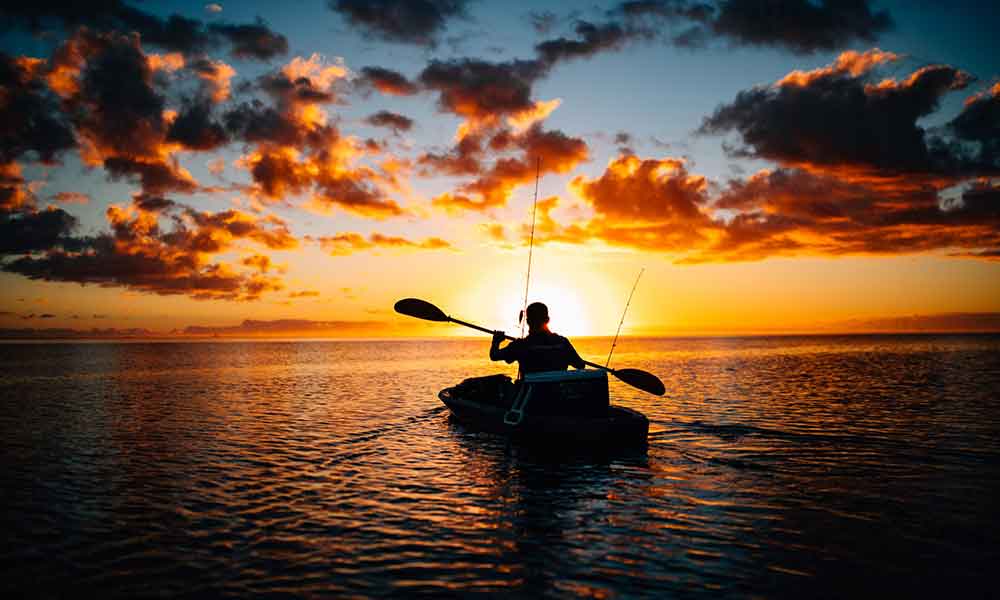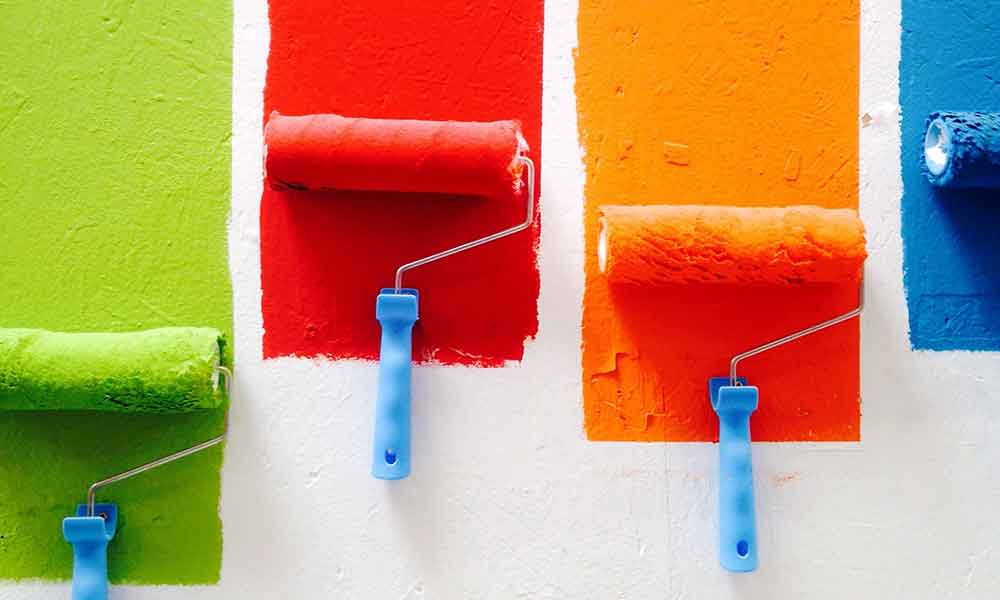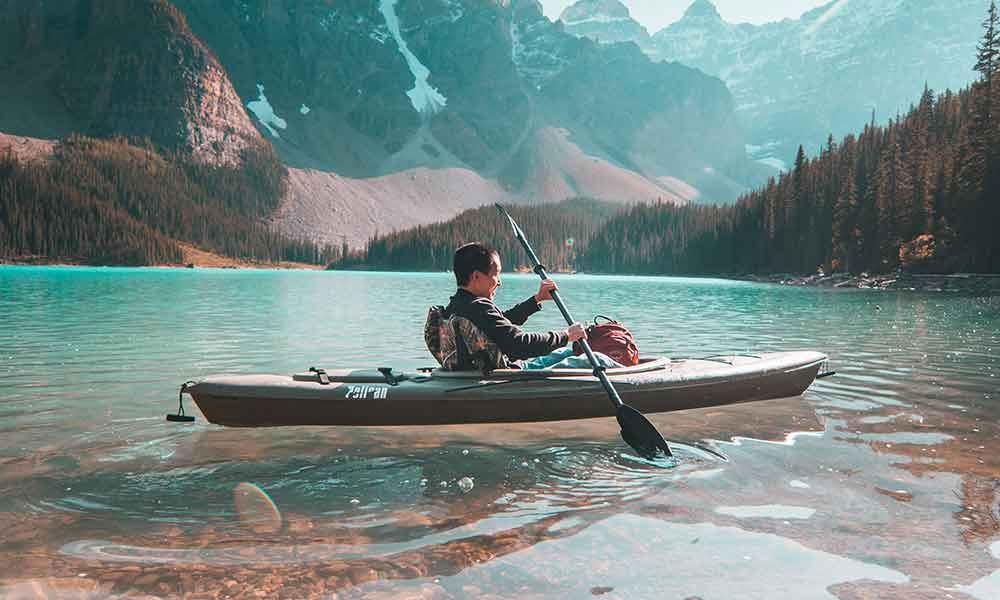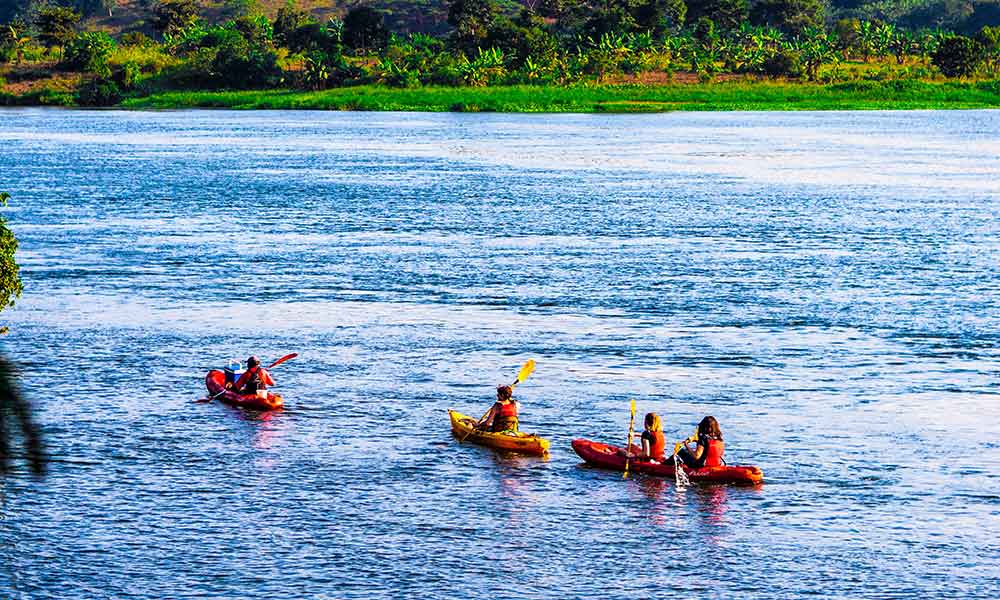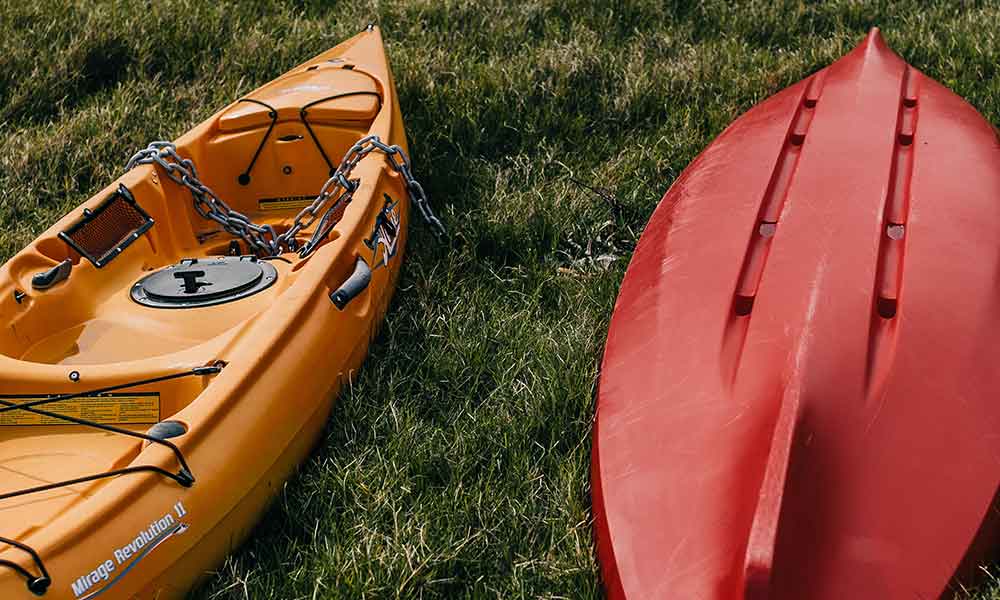As a novice kayaker, you may feel a little lost when hanging around with other kayakers talking kayaks. There are many kayaking components unique to kayaks and some that are universal for all boats. Understanding the parts of the kayak and paddle will help you to learn faster since you will understand what experienced kayakers are talking about.
The parts of a kayak include the bow, stern, hull, keel, deck, deck rigging, cockpit, skirt, seat, footrests, pedals, handles, rudders, skegs, and storage compartments, among others. The parts of a kayak paddle include the shaft, blade, grips, and drip rings. Not all parts are common to all kayaks.
Knowing the parts of a kayak and paddle is not a useless exercise in learning. But rather, it can provide a benefit to your kayaking that would otherwise require a longer learning curve. We will detail the parts of a kayak and a paddle and give pertinent information about each component to understand their function.
Why Is Knowing The Parts Of A Kayak And Paddle Important?
When you learn anything new, it is of great advantage to learn terminology and components regarding your equipment.
This has benefits in several areas for the activity or pastime you are learning.
- Knowing what features to look out for on a kayak or paddle. As a new person to kayaking, you may not know what the best features are to look out for in a kayak and paddle. This may result in purchasing equipment that lacks features you need to get the most out of your kayaking or buying equipment with features you do not need.
- Kayak and paddle maintenance. Understanding the components of your equipment will give insight into the parts that require regular maintenance. This will help your equipment last longer.
- Understanding what experienced kayakers are talking about. Listening to experienced kayakers talk is a quick way to pick up information and learn from their experience. However, if you don’t know the terms for the parts of a kayak or paddle, you may not understand the conversation and lose out on valuable information.
Now that you know the importance of knowing the components of a kayak and paddle let’s start by familiarizing you with the various components and their functions.
Parts Of A Kayak
We will begin with the component parts of a kayak and move around the kayak describing each part as we go. In some cases, certain components will only be relevant to certain types of kayaks. We will indicate which types of kayaks will typically feature this component.
Bow
The bow of the kayak is the front part of the kayak. The bow is the nautical term for the front of any boat, including kayaks.
You will sometimes hear the bow referred to as the kayak’s nose, which is also an acceptable term to use for this part of the vessel.
The kayak bow is generally more pointed than the rear of the kayak to facilitate lowering resistance as the kayak moves through the water.
Stern
The kayak’s stern is the rear end of the kayak, opposite the kayak’s bow. The stern is generally not as long and tapered as the kayak’s bow. Sea kayaks are the exception and may display a stern similarly tapered to the bow.
In most cases, the stern is wider than the bow and can accommodate more packing space and provide more buoyancy than the bow.
Deck
The deck is the upper part or surface of the kayak, normally with a distinct transition between the deck and the lower part or hull.
Every kayak, irrespective of type, has a deck, but the deck may look a little different and serve different purposes depending on the kayak type.
With sit-on kayaks, the kayaker sits on top of the deck, while with sit-in kayaks, the kayaker sits on the kayak’s hull below the deck.
Carrying Handle
Many kayaks incorporate carrying handles into the kayak’s design to facilitate easy transport of the kayak to and from the water.
The common location for handles is on the kayak’s deck at the bow and the stern, but some designs build handles into various locations on the deck.
Kayak Deck Hatch
A deck hatch is the cover of an opening to a compartment below the kayak’s deck. Many kayaks have waterproof storage compartments fore and aft of the cockpit. The deck hatch is the cover that prevents water from entering the storage compartment.
Some kayaks do not have any storage compartments. Whitewater and racing kayaks typically do not have any storage, obviating the need to deck hatches.
Kayak Storage Compartment
As we have mentioned, some kayaks have waterproof storage compartments. These compartments offer storage space for the kayaker for provisions, camping gear, fishing gear, or personal belonging.
If the storage compartments are not used, they provide additional buoyancy for the kayak and can help prevent a kayak from sinking in the event of a rollover.
Kayak Shock Cord Deck Rigging
This kayak component can also be referred to as deck lines or deck bungee cords. These are elasticated ropes strung in a crisscross pattern across the deck.
The purpose of deck rigging is for additional packing space, such as equipment stored in a dry bag or clipping gear to the rigging with carabiners.
Cockpit
The cockpit of the kayak is generally only relevant to sit-in kayaks. The kayaker of a sit-in kayak sits on a seat positioned on the kayak’s hull, below the deck.
The kayak cockpit is the opening in the deck where the kayaker sits while operating the watercraft. The size of the cockpit can vary, which makes it important to size a kayak correctly for your stature.
Typically, sit-in kayaks with a cockpit provide better protection from the elements for the kayaker since they are protected from wind, sun, and spray from the water.
Sit-in kayaks do not have a cockpit but rather have contoured positions on the deck where the seat is located for the kayaker to sit.
Seat
The seat is the place where the kayaker sits while paddling the kayak. All kayaks have seats, but not all kayak seats are the same. Some kayaks allow the seat to be removed to accommodate the fitment of other types of kayak seats.
Sit-in kayaks have a seat positioned below the kayak’s deck in the cockpit, while sit-on kayaks have seats positioned on top of the deck of the kayak.
Thigh Braces
Kayaks with cockpits sometimes include thigh braces on the sides of the cockpit, near the front, where your thighs will be positioned when sitting in the kayak.
The purpose of this component is to push your thighs against the thigh brace on either side, which provides better balance in rough water or when negotiating rapids.
Bracing against the thigh braces also helps turn kayaks that do not have rudders.
Coaming
The coaming is the cockpit’s upper rim, which facilitates the fitment of a splash skirt to the cockpit. Not all kayaks have this feature since not all kayaks need to accommodate the fitment of a spray skirt.
This feature is mostly available on kayaks intended for use in whitewater or the ocean and only on sit-in kayaks.
Skirt
A kayak skirt is also known as a splash cover, splash skirt, or spray cover. The skirt covers the open cockpit area of the kayak to prevent water from entering the kayak.
The skirt is placed over the kayaker’s head and pulled down to the mid-chest area. The wide end of the skirt is pulled taut around the coaming to provide an effective seal preventing water from splashing into the kayak.
Skirts are typically only used on kayaks intended for rough water use, such as whitewater kayaks or sea kayaks of the sit-in variety.
Kayak Footrests
All kayaks have footrests, whether they are sit-in or sit-on kayaks. Footrests provide an important brace point that helps the kayaker control the kayak more effectively, especially when pulling hard with the paddle.
The footrests may be an integrated part of the molding of the kayak structure or a separate bar that can be removed or adjusted for the kayaker’s preference.
Pedals
Some kayaks have pedals instead of footrests. Typically, kayaks with rudders will have pedals to allow the kayaker to control the rudder with their feet to direct the kayak’s bow.
Some kayaks, such as some fishing kayaks, use pedals which the kayaker must power like a bicycle. These rotating pedals drive a small propeller which gives the kayak forward motion. This allows a fishing kayak to be propelled by the kayaker fisherman’s feet while leaving their hands free to work the fishing rod.
Hull
The kayaks hull is the lower part of the kayak that sits in the water. There are a variety of different hull shapes which impart different handing capabilities and stability to the kayak.
Kayaks with flatter hulls are typically more stable than kayaks with rounded or V-shaped hulls.
Keel
The kayak’s keel is the center ridgeline along the hull of the kayak. Keels are often shaped differently on certain kayaks to accommodate the intended use of the kayak.
The keel helps maintain a straight-line movement of the kayak through the water. Whitewater kayaks often have no keel since the hull is smooth and rounded.
Rudder
Many kayaks do not have rudders, and the kayak is steered using paddles. However, some kayaks, such as racing kayaks and fishing kayaks, include rudders for steering.
The kayak’s rudder is located at the stern of the kayak and swivels on a pulley. The pulley is controlled by a system of cables linked to pedals that the kayaker presses with their feet to change the kayak’s direction.
Skeg
A skeg is a component that is not featured on all kayaks, but some kayak types can accommodate the fitment of a skeg if required.
The skeg is a tapered triangle shape that is fixed to the kayak’s keel, usually towards the stern end of the keel. Some may confuse this component with a rudder, but a skeg is fixed in position and does not swivel, unlike a rudder.
Some kayaks have removable skegs, allowing the skeg to be fitted or removed depending on the kayaking conditions.
The purpose of the skeg is to keep the kayak tracking in a straight line in windy conditions or strong current conditions, which tend to cause the kayak to go off course.
Parts Of A Paddle
The paddle is an important part of kayaking and is used for propulsion, direction, and balance. It is important to know the component parts of the paddle since some design features of these components can affect your paddling experience.
The paddle has considerably fewer component parts than the kayak, but it is handy to know what these components are called and what their functions are on the paddle.
The Paddle Shaft
The paddle shaft is the long cylindrical tube that all the other components of the paddle are assembled on.
Not all paddle shafts are straight; some have kinks built into them where your hands will hold the paddle. These paddles are often called “bent” paddles. This is intended to provide a more comfortable paddling position for your hands and helping to prevent wrist strain.
Kayak paddle shafts can be made from various materials, including the following.
- Aluminum. These paddle shafts are fairly common, tough, durable, and cheap. However, they are often heavier than other paddle shaft materials.
- Plastic. Plastic paddle shafts are light, durable, and reasonably priced. They are considered beginner paddles since they do not have the features offered by more expensive shaft materials such as flexibility and spring
- Graphite. Graphite or carbon fiber paddle shafts are in the upper price range of paddle shaft materials. They have flex, durability and are very lightweight.
- Fiberglass. Fiberglass shafts are a good mid-range paddle choice. They offer strength, a degree of flex, and they are lightweight.
- Wood. These paddle shafts are very expensive, not easy to source, and require more care and maintenance than other paddle shaft materials.
The diameter of the paddle shaft is an important aspect to consider when selecting a kayaking paddle. The wrong diameter paddle can result in cramps or fatigue in your hands when used over a long period.
Choosing the right paddle for your kayaking is important to get the most out of your kayaking. We have an extensive article called How To Choose A Kayak Paddle which will guide you to make the right choice.
The Paddle Blade
The paddle blades are the wide ends of the paddle dipped into and pulled through the water to propel the kayak. There are numerous blade designs intended for different paddling purposes.
The main paddle blade types are as follows.
- Wide blades
- Narrow blades
- Asymmetric blades
- Wing blades
- Dihedral blades
Paddle Grips
Paddle grips are rubberized or plastic grips fitted to the paddle’s shaft where your hands will grip the paddle.
The grips are shaped to fit the contours of your hand better than the cylindrical shaft and provide a more firm and secure grip on the paddle shaft.
Not all paddles have this feature, but selecting a paddle with grips will be more comfortable than a paddle without, especially for long-distance kayaking.
The Throat Of The Paddle
The throat of the paddle is the descriptor given to the region of the paddle shaft between the grips and the blade.
Paddle Drip Rings
Drip rings are not fitted to all kayak paddles but are a useful feature to have. The drip ring is a metal or rubberized ring fitted on the throat of the paddle. It is usually positioned on the shaft midway between the grips and the paddle’s blade.
During the action of paddling, water runs down from the blade of the paddle during the up-stroke. This water runs down the paddle shaft and onto your hands.
This causes your hands to become wet, which can be a problem in icy conditions, making your hands very cold. It can also cause blisters on your hands over long distances.
The drip ring catches the water on the shaft before it reaches your hands and causes the water to drip off the shaft.
Conclusion
Components of a kayak and a paddle can be totally foreign to someone who has never had exposure to the activity or any other boating sport.
Knowing the components and what they do helps understand how the kayak works and improves your overall knowledge of the equipment you will use while kayaking.

